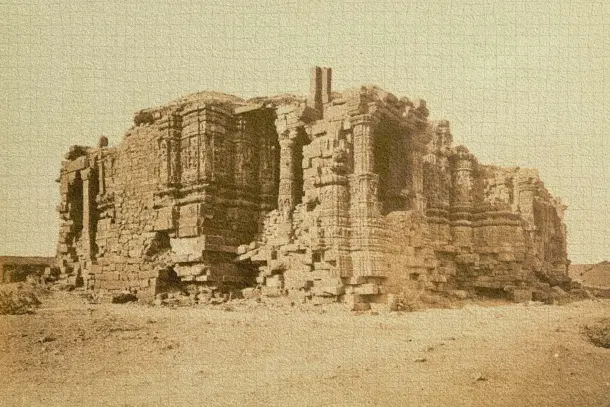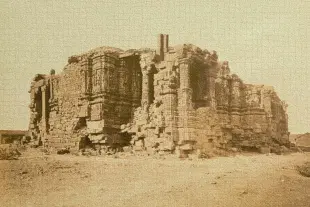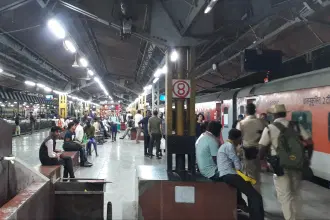Commentary
When Activism Masquerades as Scholarship: The IITs Deserve Better
Harshil Mehta
Jul 30, 2025, 12:05 PM | Updated 12:05 PM IST
Save & read from anywhere!
Bookmark stories for easy access on any device or the Swarajya app.


India's IITs have increasingly become recruitment grounds for ideologically driven academics who present activism as scholarship. This concern led this author to examine recent archaeological interpretations, particularly those of IIT Bombay's Assistant Professor Rachel A. Varghese.
While browsing the social media platform X, this author came across the name of Assistant Professor Rachel A. Varghese. She is also affiliated as a research scholar with the Kerala Council of Historical Research, an institution funded by the Communist Government of Kerala.
This affiliation prompted a closer examination of her research to assess the accuracy and logical coherence of her claims. In the course of this inquiry, this author encountered her article titled Digging for a Hindu Nation, published by the London School of Economics.
In it, she argues that "the search for the Hindu nation is closely linked to the development of archaeology and its manipulative use."
At the outset, Varghese refers to a Reuters report. She then asserts that K. N. Dikshit chaired a Ministry of Culture committee in 2017 "to rewrite the history of India."
According to her, the objective of this committee "is to use archaeological and DNA evidence to establish the Hindus as the descendants of the original inhabitants of the territory and to make a case for factual proof for the existence of the Hindu myths," as cited from the report.
Varghese and several others like her build their analysis solely on a single Reuters article, without engaging with primary sources or the committee’s actual documentation. This approach suggests a potential confirmation bias in her methodology.
Reconstruction of the Somnath Temple
Varghese further cites the reconstruction of the Somnath Temple as evidence of the Archaeological Survey of India (ASI) failing in its duties. The temple was in a state of disrepair after India’s independence, and its reconstruction was proposed and executed by Congress leader K. M. Munshi.
She writes, "The removal of the ruins went against the principles that govern protection of such monuments, one of the primary functions of the ASI." She further comments on "stripping away its medieval (read Islamic) layers to expose the original (read Hindu) history."
To credibly argue that the ASI failed in its duties, one must first establish whether the Somnath Temple was classified as a protected monument in 1949, when the reconstruction began.
Moreover, the notion that Indian archaeologists are collectively preoccupied with erasing medieval layers to assert a particular historical narrative is unfounded. It is a familiar tactic used by leftist academics to discredit archaeologists engaged in uncovering historical strata.
Such scholars often assert that the destruction of Hindu temples should not be emphasised, while insisting that damage to the religious sites of other communities must be foregrounded.
While introducing the Somnath Temple, Varghese writes, "Somnatha is the site of a Hindu temple which went through many phases of destruction and reconstruction and renovation in the pre-independence period. It was part of the princely state of Junagarh, whose ruler wished to accede to Pakistan at the time of independence. He was forced to flee to Pakistan following a movement against him led by the Indian National Congress and the territory was annexed to India."
In reality, the Nawab of Junagadh sought accession to Pakistan despite the state having a Hindu-majority population that wished to join India. A plebiscite was held in 1948 in which the people overwhelmingly voted in favour of integration with India.
The use of the word annexed is misleading in this context. This choice of phrasing implies that Varghese may be sympathetic to the Nawab's position, despite the fact that the outcome was determined through a democratic mandate reflecting the people’s will.
Indus Valley Civilisation
Varghese also writes about "the nationalist obsession of attributing ‘Indian-ness’ to the Indus sites." She cites as examples the large-scale excavations carried out in India’s western states after independence, Tamil assertions that Dravidians are the direct descendants of the Indus civilisation, and efforts to connect Vedic Aryans to the Indus Valley Civilisation.
However, her criticism is selectively targeted only at those who support Hindutva and the indigenous origin theory of the Aryans. She offers no critique of Tamil assertions regarding their descent from the Indus Valley Civilisation.
She implicitly dismisses excavations undertaken in India since Partition that pertain to the Sindhu-Sarasvati Civilisation (SSC). She argues that Indianness is being artificially imposed on the Indus Valley Civilisation by Hindutva adherents.
However, archaeological data show that approximately 1,000 SSC sites are located in present-day India, compared to about 500 in present-day Pakistan. The highest concentration of SSC sites lies in the Sarasvati basin rather than the Indus Valley.
Perhaps most strikingly, Varghese refers to the Sarasvati River as mythical. However, robust geological surveys and literary sources establish that the Sarasvati River did in fact exist. If the river had not existed, it is implausible that the Vedic people would have venerated it.
The Nadi Sukta (Rig Veda 10.75) lists ten rivers, including the Sarasvati. All the others in the list correspond to identifiable rivers, raising the question of why only one would be fictional. Furthermore, if the Sarasvati River did not exist, how can the numerous SSC sites located in the region described in the Rig Veda be explained?
Professor B. B. Lal, one of India’s most respected archaeologists, addressed this issue in his book The Sarasvati Flows On. He demonstrated that the sites of the so-called Indus Valley Civilisation are closely connected to the Sarasvati River. The largest SSC site, Rakhigarhi, lies in the Sarasvati basin, not the Indus Valley. Similarly, the site of Kalibangan in Rajasthan was a SSC town situated on the banks of the Sarasvati.
This author has not yet had the opportunity to study Rachel A. Varghese’s other work in detail.
However, the Ministry of Education must exercise greater scrutiny over such academic appointments. Students deserve an education grounded in evidence and intellectual honesty, not ideological agendas presented as scholarship. When prestigious institutions like IIT serve as platforms for academically compromised activism, the credibility of India’s educational system is placed at serious risk.
Harshil Mehta is a columnist who writes on international relations, diplomacy, and national issues. He tweets @MehHarshil.





